Geese are highly social waterfowl and a relative of ducks and swans. You may have noticed that they come in various colors; some are plain white, and others are a combination of colors. You may also have seen some with blackheads, beaks, and legs.
These are black geese. Black geese are waterfowl representing the genus Branta of the Anatidae family. Under the black geese genus, there are other species, some of which also break into smaller subspecies.
This article introduces you to six species that make up the black geese family. Read on to find out whether you have seen any of these species.
Contents
Barnacle Goose
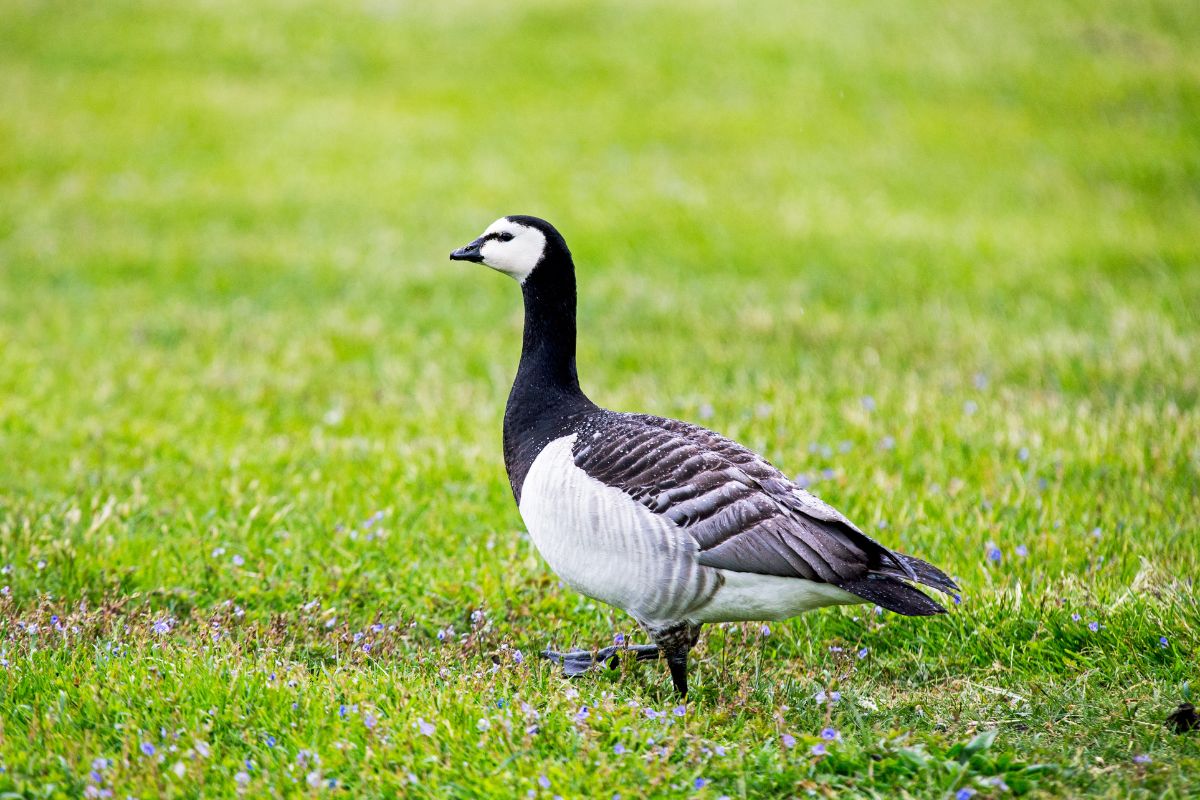
First up on our list of black geese species is the barnacle goose. The barnacle goose is a medium-sized goose that weighs 1-2 kilograms. They are medium-sized geese measuring between 55 and 70 cm long with a wingspan of 130-145cm. The Barnacle Goose can cruise at speeds of up to 95 km/hr.
You’ll most likely encounter a barnacle goose in North America, Europe, and Asia. You’ll know them by their black heads, necks, upper breast, white face and bellies, silver-gray wings, and back feathers.
Lifestyle Habits
The barnacle goose is a migratory bird that travels and feeds in large flocks. They forage for leaves, grass, roots, herbs, and other vegetation. In the winter, they rely on agricultural grain and vegetables for survival.
Mating Habits
Barnacle geese establish long-term monogamous pair bonds. During mating, the geese are in colonies of up to 50 pairs. In these colonies, the female geese are responsible for constructing nests in an area inaccessible to their predators.
They build their nests from dead foliage, down, and mud. Once they’ve made the nest, the female lays 3 to 5 eggs and incubates them for 24-26 days. During the incubation period, the males in the colony are responsible for feeding and protecting the females.
After the incubation period, goslings hatch while fully developed. They can forage with their parents. Goslings attain reproductive maturity within two to three years of age.
Cackling Goose

Cackling geese are another species of black geese. They are native to North America, but their populations have been spotted in Eastern Siberia, Japan, and Eastern China.
Cackling geese have a black neck and head but can be distinguished by the white “chinstrap.” Their bodies are covered with brown feathers on the belly and back and a white feather under the tail. They are typically confused with the Canadian geese, thanks to their similarities in appearance.
Medium-sized geese measure 63-65 cm in length and weigh 1.4-3 kg. They have a wingspan of between 108 and 111 cm.
Cackling geese can be of the following subspecies:
- The Richardson’s cackling goose
- The Bering cackling goose (possibly extinct)
- Aleutian cackling goose
- Taverner’s cackling goose
- Small cackling goose
Lifestyle Habits
Cackling geese are primarily herbivores, relying on plants (on land and water). They eat cultivated grain, insects, crustaceans, and mollusks in winter.
Mating Habits
Like the barnacle goose, cackling geese form lifelong monogamous pairs. They mate during the spring migration, building nests on sea cliffs to stay safe from predators.
The females build nests and also protect their nests and their vicinity. Depending on their location and population, the birds may nest individually or in dense colonies.
Brent Goose
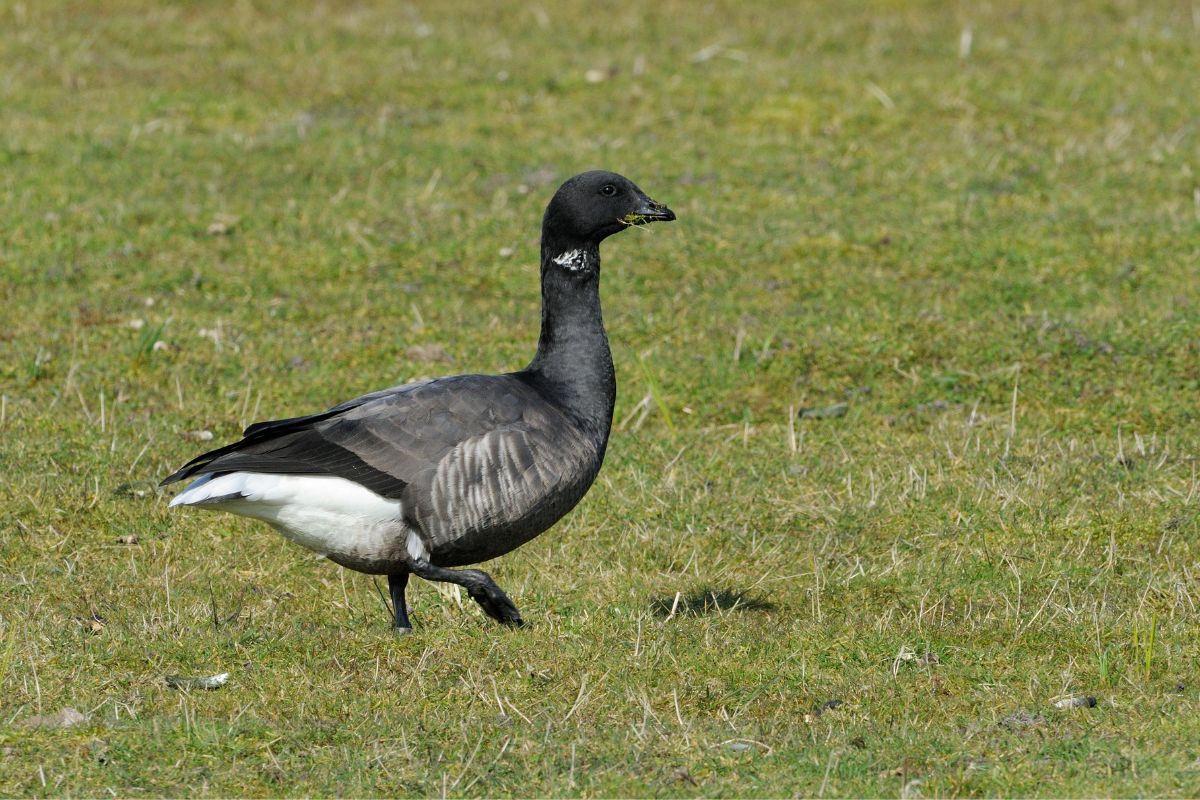
The brent goose is a species of smaller black geese. They vary from 59.2 to 62.2 cm long, with a wingspan between 105 and 108 cm. Brent geese weigh significantly less than other black geese at about 1.1 and 1.7kilograms.
Like other black geese, the brent goose has a black head, neck, bill, and legs. The wings on the mid-body are brown and white, while the under-tail is white.
Brent geese are further divided into three subspecies as follows:
- The dark-bellied brent geese, which are found on the coasts of Siberia
- The pale-bellied brent goose, mainly located in Europe and North America
- Black Brents found primarily in North America
Lifestyle Habits
The brent goose is primarily a coastal goose. For a long time, their diet consisted of eelgrass, but it has evolved to include other sea plants such as water lettuce, sea cabbage, lawn grass, and salt marsh grass.
Mating Habits
Brent geese will migrate to the arctic regions of North America and Europe to breed. They can travel up to 3000 miles long, searching for an ideal place to nest.
Once they find an ideal nesting ground, the females make a nest in the ground. They line the nest with moss, seaweed, down, and lichen. Each female lays three to five eggs which hatch in under a month.
During the incubation period, if the female has to leave the nest to forage, she will keep her eggs covered in down for warmth.
Red-Breasted Goose
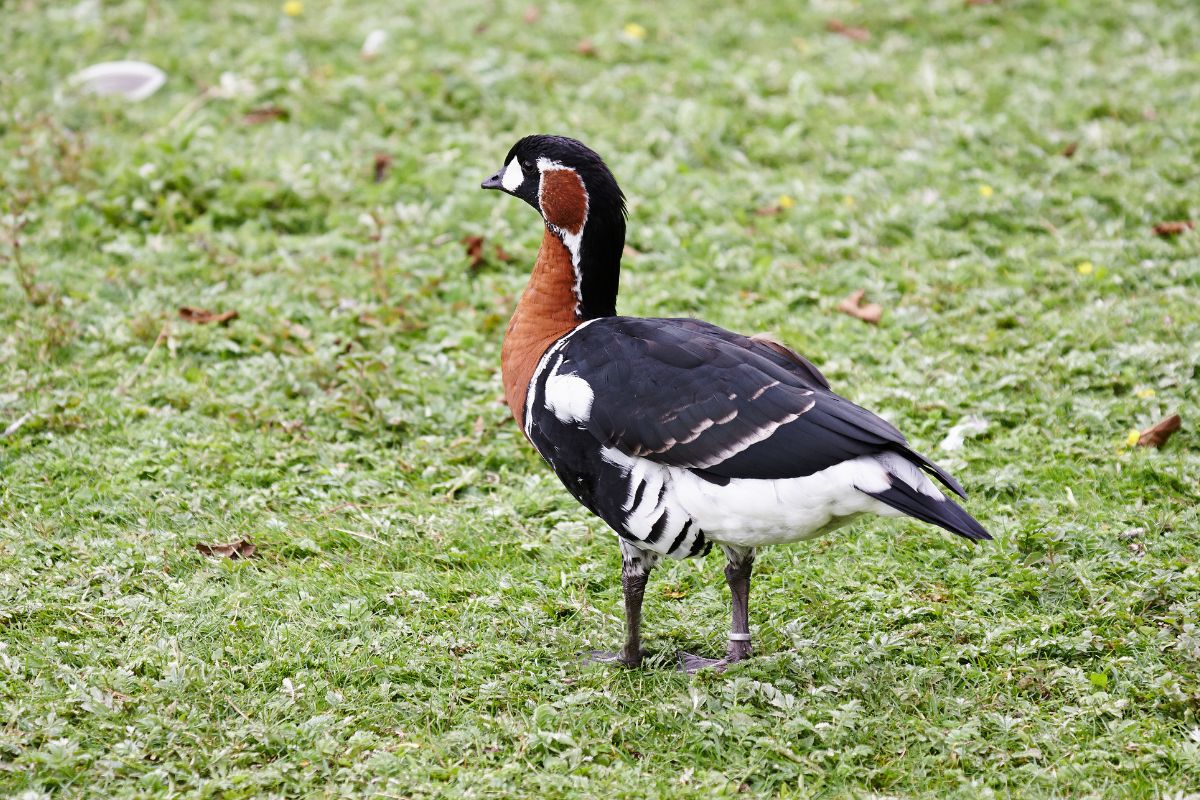
Despite its name, the red-breasted goose is a species of black goose. Like other black geese, it has a black head and back of the neck. However, its breast is a reddish-copper color. It also has similar colorations at the side of its head. The rest of the red-breasted goose’s body is black with white highlights.
The red-breasted goose is a rare species found in Siberia and other areas of Europe. The International Union for Conservation of Nature (IUCN) considers the red-breasted goose a vulnerable species thanks to its low population of fewer than 100,000 birds.
Their population keeps declining due to predation, hunting, climate change, and industrialization.
Lifestyle Habits
Red-breasted geese live in habitats ranging from wetlands and terrestrial areas of the world’s arctic regions. Their wild diet consists of small fish, aquatic plants, grain, and grasses.
Mating Habits
During mating season, the red-breasted goose nests close to birds of prey to offer them protection from their predators. Although birds of prey may still attack the geese, they are less likely to attack them in large groups.
They take extra caution to keep their nests as hidden as possible, and the male geese stand guard while the females hide in the nests.
Canadian Goose
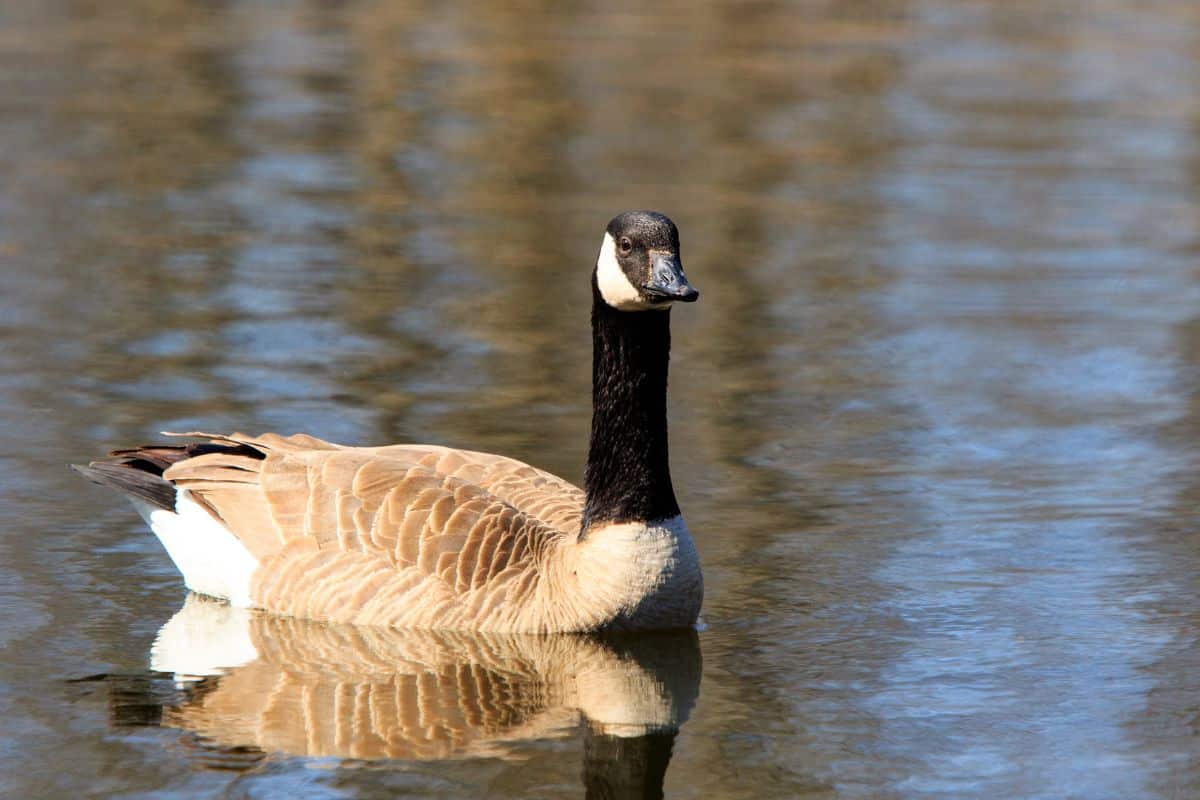
Canadian geese are the most widespread geese species of the black geese family. They are highly adaptable to urbanized living where food is plenty and predators are few.
In the last century, the Canadian goose has raised its population from vulnerable and almost extinct to robust and problematic for farmers and homeowners. They have also spread to other regions, including Siberia, China, the UK, the Netherlands, France, Scandinavia, and New Zealand.
The bird is large compared to other black geese, with the adult weighing an average of 3.9 kilograms. It has a black head and black neck, with a distinctive chinstrap. They measure 75-110 cm in length and 127-185 cm in wingspan.
Lifestyle Habits
Canadian geese primarily eat vegetation and grains. However, they may also include insects and fish in their diet. When in water, they can eat aquatic plants, including seaweed. Those that have adapted to living in urbanized areas forage for food in garbage bins.
Mating Habits
Canadian geese are monogamous. They start pairing at around two years old and remain with their partners as long as they are alive. During the mating season, they will find elevated areas to nest near lakes, ponds, beaver lodges, or other areas near water bodies.
The females lay between two to nine eggs. Each parent is responsible for guarding the eggs during the 24-32 days it takes to incubate their eggs. Canadian geese can delay their breeding time to a time with the best temperatures for incubation.
Hawaiian Goose
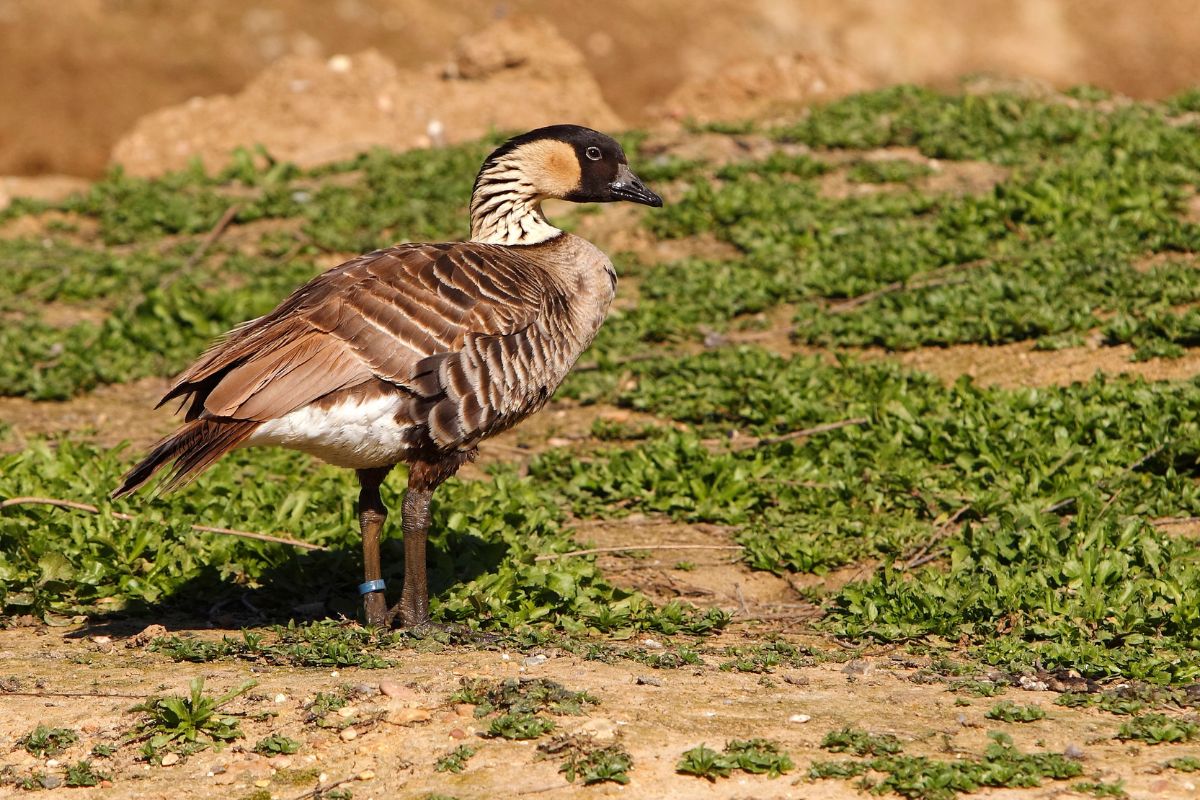
The Hawaiian Goose, also the official state bird of Hawaii, is a medium-sized black goose. It is native to the islands of Hawaii and holds the title of the rarest goose in the world. There are about 3,000 birds.
A Hawaiian Goose has a black face and head. Its neck is a pale grey with black streaks. The striped pattern continues for most of the goose’s plumage.
The Hawaiian Goose is relatively isolated and spends most of its time in native alpine grasslands, shrublands, woodlands, grasslands, and volcanic deserts. You may also find a few of them in parks and golf courses.
Lifestyle Habits
Although they can fly, Hawaiian geese spend most of their time on the ground foraging for food. They eat leaves, flowers, fruits, and seeds of shrubs and grasses.
Mating Habits
The Hawaiian goose’s breeding season lasts from October to March.
These geese build nests in grasslands, woodlands, and scrublands. Once nests are set, females lay an average of three eggs, followed by an incubation period of about a month.
Males serve as the guards during incubation to protect the females and potential offspring from predators. If a goose loses its eggs through predation or for failing to hatch, it may re-nest.
Final Thoughts
Depending on where you’re from, you’ve probably seen one or more species of black geese. These are interesting birds with an exciting way of life. They are mostly herbivorous and travel vast distances yearly for food and breeding.
You’ve probably caught a few sightings of V-shaped processions in the sky – they could have been a species of black geese flying for the breeding season.
